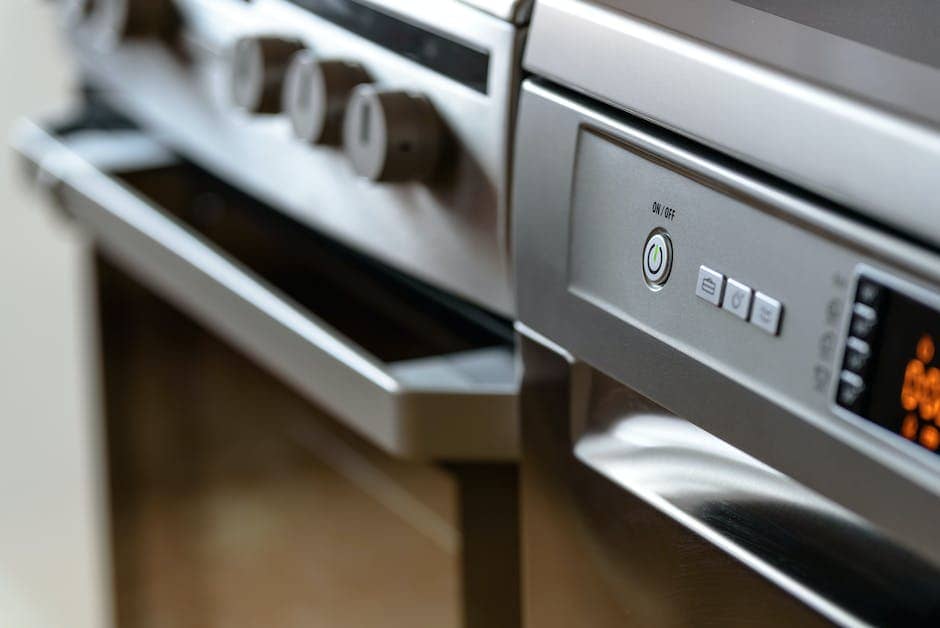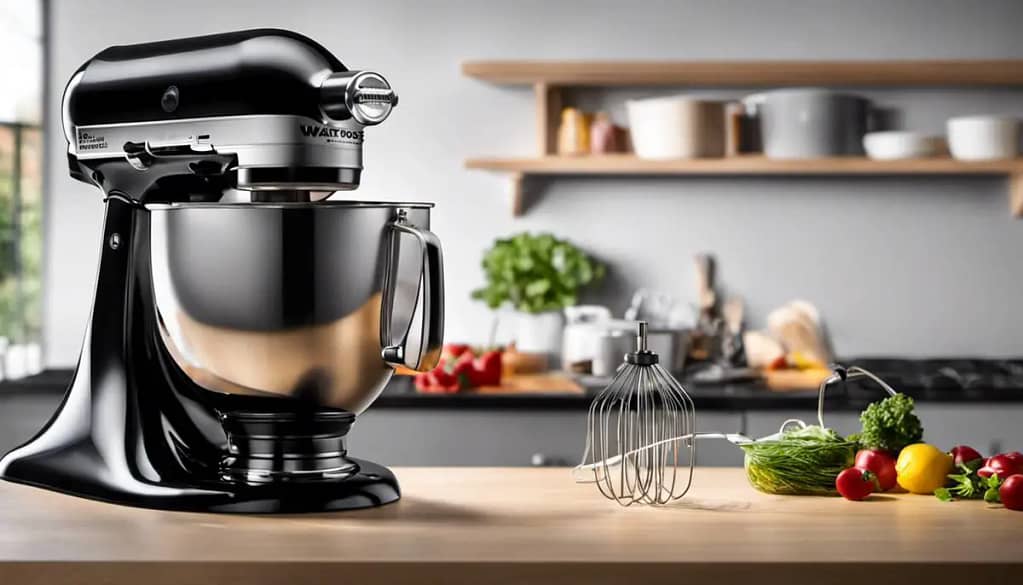As an Amazon Associate, I earn from qualifying purchases
What is the Best Wattage for a Hand Mixer? Navigating the world of kitchen appliances can be filled with technical jargon. One of these terms thrown around is ‘wattage’, a crucial factor when it comes to choosing the ideal hand mixer. But what exactly does it mean? And how does it relate to the overall performance of the mixer? The aim is to shed light on these queries and to equip you with the necessary knowledge to make informed decisions when purchasing your next hand mixer.
We’ll delve into the relationship between wattage and power, how it impacts the performance of your appliance, and why a higher wattage may signify a more robust mixer. Additionally, we’ll give you an insight into the ideal wattage required for different kitchen tasks, such as whipping cream, kneading dough, and blending purees, helping you understand that the power requirement varies per task. Furthermore, we’ll guide you on how to strike a balance between wattage, performance, and power consumption, because while high wattage could mean enhanced performance, it also means higher power consumption.
Understanding Wattage in Appliances
Understanding Wattage in Appliances
Wattage, in the context of kitchen appliances such as a hand mixer, refers to the electrical power unit of the motor. It directly signifies how much electricity an appliance will draw or consume while in use. In general terms, the higher the wattage, the more powerful the appliance is, as it can operate more intensively. The power factor of an electronic device, including the hand mixer, indicates its efficiency in converting electrical energy into mechanical energy.
The Role of Wattage in Hand Mixers
In a hand mixer, the wattage plays a crucial role in its operating capacity. A higher wattage indicates a more potent motor, which in turn, ensures a faster and more proficient mixing capability of the appliance. This means, that when a hand mixer has a higher wattage, it can quickly and effectively manage and blend heavier ingredients such as dough or butter. It can also sustain a longer period of operation without overheating, which is useful when you’re tackling big, time-consuming baking projects.
Best Wattage for a Hand Mixer
While a high wattage does imply better functioning, it doesn’t necessarily mean you need to get the highest-wattage mixer available. The best wattage for a hand mixer generally depends on your baking and cooking needs. If you regularly work with light ingredients or do minor baking, a hand mixer with a wattage between 200-250 Watts should be adequate. However, if you frequently deal with heavy dough or require prolonged use, it is advisable to opt for a model with a higher wattage, say 300 Watts or above.
The Relationship Between Wattage, Performance, and Durability
Wattage doesn’t only relate to performance; it’s also closely linked with durability. Since a high-wattage hand mixer can handle heavier tasks and run for longer periods without overheating, it often boasts a longer lifespan compared to its low-wattage counterparts. The extra power doesn’t strain the motor as much, helping to keep the mixer in peak condition for longer. However, it’s important to note that wattage is just one factor affecting a hand mixer’s durability. Quality of construction and maintenance also play significant roles.
Final Considerations
To conclude, it’s vital to understand the implications of a hand mixer’s wattage when deciding on the most suitable appliance for you. Your ideal wattage will be heavily influenced by your individual baking needs, your aims for energy efficiency, and your own budget restrictions. Remember, the objective is to find a suitable balance between functionality and power consumption – the highest wattage isn’t necessarily the best choice. Instead, opt for the wattage that offers the most efficient and effective performance for your needs.

Ideal Wattage for Different Hand Mixer Tasks
The Significance of Hand Mixer Wattage
Hand mixers, with their multifunctional capabilities, represent a critical tool in any kitchen. From whipping cream to kneading dough, they handle a range of tasks. The effectiveness of any hand mixer directly correlates to its wattage, which serves as a measure of its power. A higher wattage typically equates to a stronger mixer. Therefore, consideration of the wattage is important when choosing a hand mixer, as it greatly influences the mixer’s performance, especially during intense, demanding tasks.
Wattage Range for General Hand Mixer Tasks
Hand mixers typically range from 200 to 400 watts, but models can be found with power up to 800 watts. For tasks like beating egg whites or whipping cream, a low to medium wattage, around 200 to 250 watts, is usually sufficient. These tasks require light, fast mixing to incorporate air without overbeating.
Ideal Wattage for Kneading Dough
However, tasks like kneading dough require a higher wattage. This is a more labor-intensive process that requires more power, control, and resilience. For a full-bodied dough, a mixer with a wattage of at least 300 to 350 watts is recommended. Some particularly stiff doughs may require even more power, with mixers up to 500 watts commonly used.
Perfect Wattage for Blending Purées
Blending or puréeing ingredients also requires a bit more power. The goal is to break the ingredients down into a smooth, unified blend without damaging the motor. For these tasks, a hand mixer with a wattage in the range of 250 to 350 watts is generally suitable.
When High Wattage is Necessary
For thick, heavy, or stubborn ingredients, or if you frequently use your mixer for prolonged periods of time, a high-wattage mixer may be the best option. Hand mixers with wattages ranging from 500 to 800 watts provide the power needed for these intensive tasks without overheating or causing motor stress.
Wattage and Energy Efficiency
While a high wattage can be beneficial for efficiency and effectiveness, it’s worth noting that higher wattage also means higher energy consumption. Thus, choosing a hand mixer with a wattage that matches your frequent usage needs can also be a good step towards energy efficiency and sustainability.
Power is an essential feature to consider when combating different culinary tasks using a hand mixer. The appliance’s wattage plays a crucial role in determining the efficiency and quality of results, whether whipping cream, kneading dough, or preparing purees. Therefore, knowing the correct wattage needed for each task is key to selecting an appropriate mixer for your baking and cooking requirements.

Balancing Wattage, Performance, and Power Consumption
Decoding the Wattage of Hand Mixers
The wattage of a hand mixer symbolizes its motor power, impacting its ability to handle doughs of varying thickness and operate continuously without overheating. Generally, a higher wattage equates to enhanced performance. For example, a 300-400 watts mixer is typically satisfactory for routine kitchen activities such as whisking cream, beating eggs, and mixing cake batter, proving its efficiency and versatility.
Balancing Wattage and Power Consumption
While the high wattage promises better performance, it also entails more power consumption. Therefore, if you’re mindful of energy efficiency, then it’s wise to consider the power rating of the appliance. More watts do not necessarily equate to better results, but merely more electricity usage. For example, a mixer with a 500-watt motor will consume energy faster than a 250-watt mixer, even if the latter can perform the tasks adequately.
Understanding Your Baking Needs
Choosing the best wattage also requires understanding your cooking needs. If you occasionally bake and will be mostly working with easy-to-mix ingredients, a hand mixer with lower wattage (150-200 watts) may be enough. However, for more experienced bakers who frequently make doughs, batters, and desserts, opting for a high-wattage mixer (around 300 to 400 watts) allows for more flexibility and efficiency in kitchen tasks.
Comfort and User-friendly Features
While wattage is an important consideration, the best hand mixer is not necessarily the one with the highest wattage but the one that best suits your specific needs and preferences. Besides wattage, factors that affect the overall performance and ease of use should be considered. These can include weight, control settings, speed options, ease of cleaning, and additional attachment availability.
The Balance Between Power and Cost
Lastly, while a high-wattage mixer might offer improved performance, it’s essential to consider if the cost difference is justified. Lower-wattage mixers are typically more affordable and can be more efficient in terms of power consumption, which could lead to long-term savings on energy bills. Ultimately, determining the “best” wattage for a hand mixer involves balancing power requirements, usage frequency, nature of cooking tasks, and budget.
Recommended Wattage Range
In conclusion, a hand mixer with a wattage range of 200 to 250 watts is generally adequate for most everyday kitchen tasks, providing a good balance between power, performance, and energy efficiency. However, those who frequently carry out heavy-duty tasks may need a mixer with a wattage of 300 or higher. As always, user comfort, ease of use, and cost should also be key considerations in making a final decision.

Understanding wattage in appliances, in general, might seem like a daunting task. However, with the necessary information, you can easily navigate these seemingly complex waters and make a wise purchase decision concerning your next hand mixer. By knowing the importance and implications of wattage in hand mixers, you are now more equipped to choose a mixer that delivers the power you need for your specific tasks without unnecessarily consuming too much power. Remember, the key lies in being able to balance wattage, performance, and power consumption to suit your specific needs and frequency of use. Happy mixing!
Conclusion
Choosing the best wattage for a hand mixer, therefore, largely depends on your baking needs. For light to medium tasks, a mixer between 100 – 300 watts would do the job. However, for more strenuous activities like kneading dough, you may need to pump up the wattage to between 300 – 500.
Remember, while the power is crucial, do not overlook other aspects such as speed settings, weight, attachments, and the reputation of the brand. This ensures you get a hand mixer that will serve you well and last a considerable amount of time. Happy baking!
What is the Best Wattage for a Hand Mixer FAQs:
Yes, a hand mixer within this range can blend soft but denser ingredients and even make buttercream frosting or cookie dough.
Yes, these higher-wattage mixers are designed for heavier tasks like kneading bread dough and mixing thick batters.
Other important considerations include speed settings, weight, the availability of necessary attachments, and the reputation of the brand. Each of these can significantly impact the functionality, usability, and longevity of your hand mixer.
Not necessarily. While high wattage implies more power, it doesn’t always translate to better performance for your specific needs. Analyze your baking needs and choose a hand mixer that suits them best, keeping in mind that a well-rounded mixer is often a better choice than simply the most powerful one.
Leave a Reply